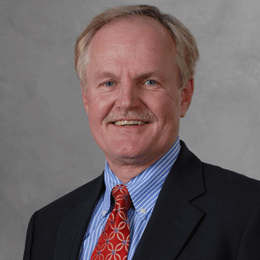
In order to create a system where leaders can thrive, employers need to create a detailed leadership pipeline that allows workers to envision themselves in an executive position down the line. Lourdes Health System is part of Trinity Health, one of the largest nonprofit health systems in the country, based in Livonia, Michigan, with locations in 21 states. Lourdes President and CEO Alexander J. Hatala explains the organization’s approach to leadership development.
Our talent management and leadership development is articulated throughout the entire organization. As we look to create a culture of learning and leadership, it’s at both the local and national levels. As a multi-state entity, opportunities arise in a more meaningful way throughout the organization versus what can be afforded at one location itself.
We look at human resources—people—as the most important aspect of delivering our mission to the community, and leadership is a key component of that. To support a culture of leadership, we must ask, ‘How do we create opportunities so that our associates progress and we help them expand their skills and competencies? How do we align associates strategically as the needs of the workforce change?’
1. TALENT ANALYSIS.
Examine leadership talent across the organization. Identify those who are emerging and valued leaders in the total population who show capacity for advancement and provide a path for them. Take a structured approach to identifying leaders. It is crucial to be transparent on how you identify and categorize leaders. It needs to be a process that is clear so individuals know what requirements are expected of them in order to be viewed as top talent.
2 SUCCESSION PLANNING.
Provide continual feedback about an associate’s professional progression, their performance and their development of competencies. Note how their skills align strategically with the organization’s goals. Identify how the skill sets of an existing leader match up with where the organization is going and how to work with them to develop those skill sets that are needed in the future. Succession planning enables continuity so emerging leaders can move to the next level.
3. STRATEGIC WORKFORCE PLANNING.
In addition to looking at the talent pool, we have a group that’s constantly looking at anticipated talent needs. These aren’t so much the competencies, but people who have the skills we’re looking for and what works for our organization to manage the health and well-being of our community and fulfill our mission.
4. EVALUATE SYSTEMATICALLY.
At the local level, we have a leadership group that evaluates talent within the organization, then ranks their performance so we can identify which are the emerging leaders. It’s a day-long process. In the end, talent pools are created at different levels within the organization. We then look at the structure of both our local organization and nationally within Trinity to identify individuals who best fit leadership needs in specific categories throughout the system.
5. OUTLINE SHORT- AND LONGTERM GOALS.
We strive to provide a career path for every individual with short- and long-term goals for professional and personal development. We map out the competencies and the experiences that potential leaders need to be considered. By creating goals in the short- and long-term, success becomes achievable and within reach. It also gives emerging leaders goals to strive for so that they continue to develop their skills.
Published (and copyrighted) in South Jersey Biz, Volume 6, Issue 5 (May, 2016).
For more info on South Jersey Biz, click here.
To subscribe to South Jersey Biz, click here.
To advertise in South Jersey Biz, click here.








